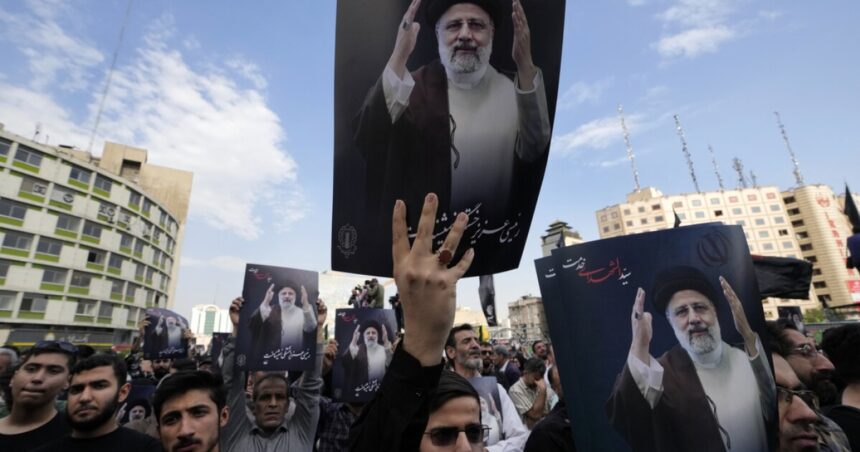Mourners in black started gathering on Tuesday for a series of funerals and processions honoring Iran’s late president, foreign minister, and others who died in a helicopter crash. These ceremonies, organized by the government, serve to pay respects to the deceased and demonstrate strength in a volatile Middle East.
Mass demonstrations have played a key role for Iran’s Shiite theocracy in the past. Millions showed up in the streets of Tehran during the Islamic Revolution in 1979, as well as for the funeral of Grand Ayatollah Ruhollah Khomeini a decade later. In 2020, around 1 million mourners attended processions for the late Revolutionary Guard Gen. Qassem Soleimani, who was killed in a U.S. drone strike in Baghdad.
The turnout for President Ebrahim Raisi, Foreign Minister Hossein Amirabdollahian, and others is uncertain. Raisi, who died in the helicopter crash, won the presidency in the country’s lowest-turnout election. He also oversaw severe crackdowns on dissent. Prosecutors have warned against any public displays of celebration following his death, and there is a heavy security presence in Tehran post-crash.
Raisi was considered a potential successor to Iran’s supreme leader, Ayatollah Ali Khamenei. His unexpected death has raised questions about the succession process, especially since there is no clear cleric lined up for the presidency in the upcoming elections on June 28.
On Tuesday morning, a procession led by a semitruck carrying the coffins of the deceased moved through downtown Tabriz. Thousands of mourners walked alongside the coffins, some offering flowers as an emcee mourned loudly for the martyrs. The bodies will soon be taken to Qom before arriving in Tehran and then put to rest.
Middle East
Iran’s president, foreign minister and other officials found dead
8:17 AM, May 19, 2024
The funeral led by Khamenei in Tehran may not see a significant international presence due to Raisi’s controversial actions. He faced U.S. sanctions for past executions and abuses, along with sending drones to Russia for use in the Ukraine conflict.
Statements from foreign ministers like Lithuania’s Gabrielius Landsbergis and the UK’s Tom Tugendhat expressed reservations about mourning Raisi, citing his regime’s human rights violations and aggressive actions.
Further ceremonies and processions are planned in Raisi’s hometown of Birjand and at the Imam Reza shrine in Mashhad. The shrine holds special significance in Shia Islam, as it is the final resting place for the only Imam buried in Iran.
The Iranian government has declared a five-day mourning period, calling on the public to attend mourning sessions. While many in rural areas support the government, Tehran has seen protests against Raisi’s policies in recent years.
Middle East
What is known about the helicopter crash that killed Iran’s president?
5:46 AM, May 20, 2024
Following the crash, there were reports of anti-government chants and fireworks in Tehran. Criticism and jokes circulated online, prompting legal action against those spreading false content and insults about the crash victims.
The cause of the crash is still unknown, and Iran’s military is handling the investigation. The country’s civil aviation authority has faced criticism in the past for its handling of aviation incidents.
Additionally, Iran’s new Assembly of Experts held its first session after an election that included Raisi and the late Tabriz Friday leader Mohammad Ali Ale-Heshem. The assembly plays a crucial role in selecting the next supreme leader of the country.




